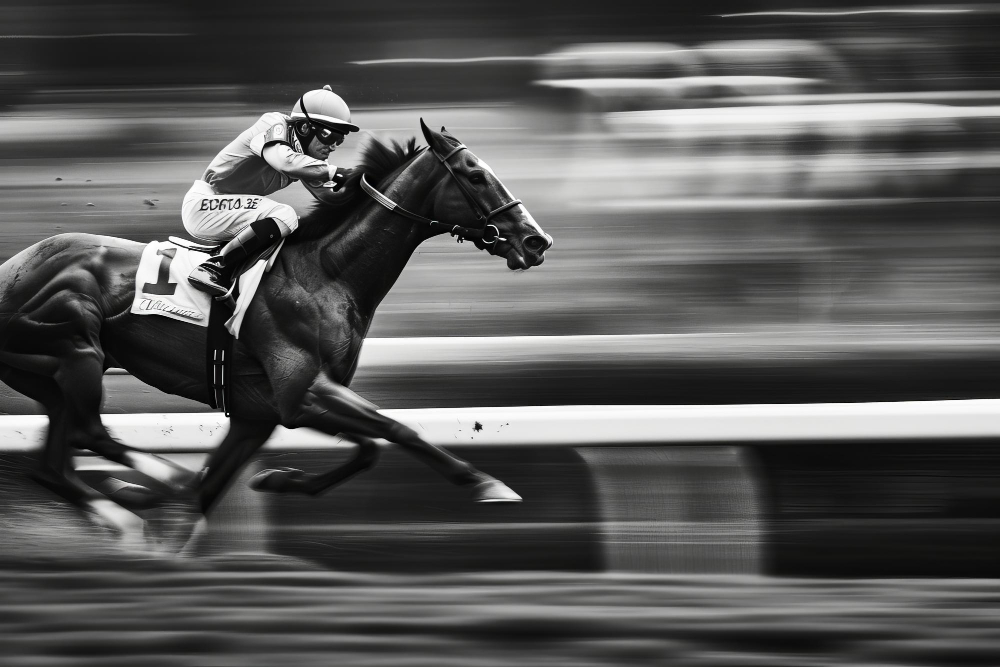Horse racing is one of the most exciting and popular sports to bet on, but for those new to the game, understanding odds and payouts can seem a bit overwhelming. The odds displayed on a betting slip are more than just numbers—they represent your potential payout and the likelihood of a horse winning. Knowing how to interpret these odds and calculate your winnings is essential for making informed decisions when placing bets.
In this blog, we’ll dive into how odds work in horse racing, explain how to calculate your potential winnings, and provide tips on how to make the most of your bets, especially when it comes to horse racing betting UK.
1. What Are Horse Racing Odds?
Odds in horse racing represent two things:
- The probability of a horse winning a race (according to the bookmaker’s estimation).
- The potential payout if your horse wins.
Horse racing odds are expressed in different formats depending on the region, but in the UK, fractional odds are most commonly used. You might also encounter decimal odds or moneyline odds in international contexts, but for this blog, we will focus primarily on fractional odds, as these are standard in the UK.
2. Understanding Fractional Odds
Fractional odds are written as two numbers separated by a slash (e.g., 5/1 or 7/2). Here’s how to interpret them:
- The first number (the numerator) shows how much profit you will make for every unit you bet.
- The second number (the denominator) represents the amount you need to stake to earn the profit indicated by the numerator.
For example:
- 5/1 odds: For every £1 you bet, you will receive £5 in profit if your horse wins. In total, you’ll get back £6 (£5 profit + £1 stake).
- 7/2 odds: For every £2 you bet, you will receive £7 in profit. So if you bet £2, your total payout will be £9 (£7 profit + £2 stake).
The larger the first number relative to the second, the higher the potential profit but also the lower the probability of the horse winning. Conversely, odds like 2/5 indicate a short-priced favourite, meaning you must stake £5 to earn £2 in profit.
How to Calculate Payouts with Fractional Odds:
To calculate your potential payout using fractional odds, simply multiply your stake by the fraction, then add your original stake to the result.
Example 1:
- Odds: 10/1
- Stake: £10
- Calculation: (£10 x 10) + £10 = £110 total payout (£100 profit + £10 stake).
Example 2:
- Odds: 7/2
- Stake: £10
- Calculation: (£10 ÷ 2) x 7 = £35 profit, so your total payout is £45 (£35 profit + £10 stake).
3. Decimal Odds Explained
Decimal odds are widely used outside the UK and are gaining popularity due to their simplicity. Decimal odds represent the total return you’ll get for every £1 bet, including your stake.
To calculate your potential winnings with decimal odds:
- Formula: Decimal Odds x Stake = Total Payout
Example:
- Decimal odds: 3.50
- Stake: £10
- Calculation: 3.50 x £10 = £35 total payout (£25 profit + £10 stake).
Decimal odds simplify the math because they already include your stake in the total payout. A decimal odds value higher than 2.0 means the horse is considered an underdog, while anything lower than 2.0 indicates a favourite.
4. Odds and Probability
Understanding the relationship between odds and probability helps bettors assess whether the odds offered by a bookmaker represent good value.
- Fractional Odds to Implied Probability: You can convert fractional odds into a percentage to estimate the implied probability of a horse winning.
Formula: Implied Probability (%) = (Denominator / (Numerator + Denominator)) x 100
Example:
- Odds: 4/1
- Implied Probability: (1 / (4 + 1)) x 100 = 20%
This means that based on the odds, the bookmaker estimates the horse has a 20% chance of winning.
- Decimal Odds to Probability: To convert decimal odds to implied probability, the formula is simpler.
Formula: Implied Probability (%) = (1 / Decimal Odds) x 100
Example:
- Decimal Odds: 5.00
- Implied Probability: (1 / 5.00) x 100 = 20%
Remember, bookmakers include a margin in their odds, so the implied probability from the odds will often exceed 100% when added across all horses in the race. This is how bookmakers ensure a profit regardless of the outcome.
5. Types of Bets and How Payouts Work
In horse racing, there are various types of bets that affect how odds and payouts are calculated. Below are the most common ones:
Win Bet:
A win bet is the simplest type of bet. You pick a horse, and if it finishes first, you win.
- Example: You place a £10 bet on a horse at 6/1 odds. If the horse wins, your total payout is (£10 x 6) + £10 = £70.
Each-Way Bet:
An each-way bet is a combination of two bets: one for the horse to win and one for the horse to place (usually in the top 2-4 positions, depending on the race).
- Example: You place a £10 each-way bet on a horse at 10/1 odds. This means £10 goes on the horse to win and £10 on the horse to place. If the horse wins, you’ll receive a payout for both the win and place part of your bet. If the horse places (e.g., second or third), you only win the place part of the bet. Place odds are typically 1/4 or 1/5 of the win odds.
Win: (£10 x 10) + £10 = £110 total payout.
Place (at 1/4 odds): (£10 x 2.5) + £10 = £35 total payout.
Forecast and Tricast Bets:
- Forecast Bet: Predicting the horses that will finish first and second in the correct order.
- Tricast Bet: Predicting the horses that will finish first, second, and third in the correct order.
These bets offer higher payouts due to the difficulty of predicting multiple outcomes in the correct sequence, but they are much harder to win.
6. Understanding “Odds-On” Favourites
An “odds-on” favourite refers to a horse with odds shorter than 1/1 (even money), meaning the potential profit is less than the stake. For example, odds of 4/5 mean you must bet £5 to win £4.
While these bets may seem less appealing due to the lower returns, odds-on favorites are usually heavily backed because they have a higher probability of winning. In such cases, bettors may place larger stakes to ensure meaningful profits.
7. Tips for Maximizing Returns in Horse Racing Betting
When it comes to making the most of your bets, understanding odds is just the first step. Here are a few tips to help you maximize returns:
- Shop Around for the Best Odds: Different bookmakers offer slightly different odds on the same race. Using odds comparison tools ensures you’re getting the best possible value.
- Use Promotions and Free Bets: Many bookmakers in the UK offer free bets and promotions that can significantly increase your potential returns, especially if you’re just starting with horse racing betting UK.
- Consider Each-Way Bets for Value: If you’re unsure about your horse’s chances of winning but think it has a strong chance of placing, each-way bets can provide a safer option with the potential for a return even if your horse doesn’t win outright.
- Monitor Form and Conditions: Odds reflect the bookmaker’s perspective, but they don’t always account for last-minute changes, like weather conditions or horse health. Staying informed can help you identify opportunities where the odds don’t fully represent a horse’s chances of winning.
Final Thoughts
Understanding how odds work in horse racing betting is fundamental for making informed bets and maximizing your potential payouts. Whether you’re a seasoned bettor or new to the sport, knowing how to calculate payouts, interpret fractional odds, and factor in implied probability gives you a strong advantage. Always remember to manage your betting responsibly and seek value in every wager to make the most out of horse racing betting.
By following these strategies, you’ll be in a stronger position to enjoy the thrills of horse racing betting while increasing your chances of success.


